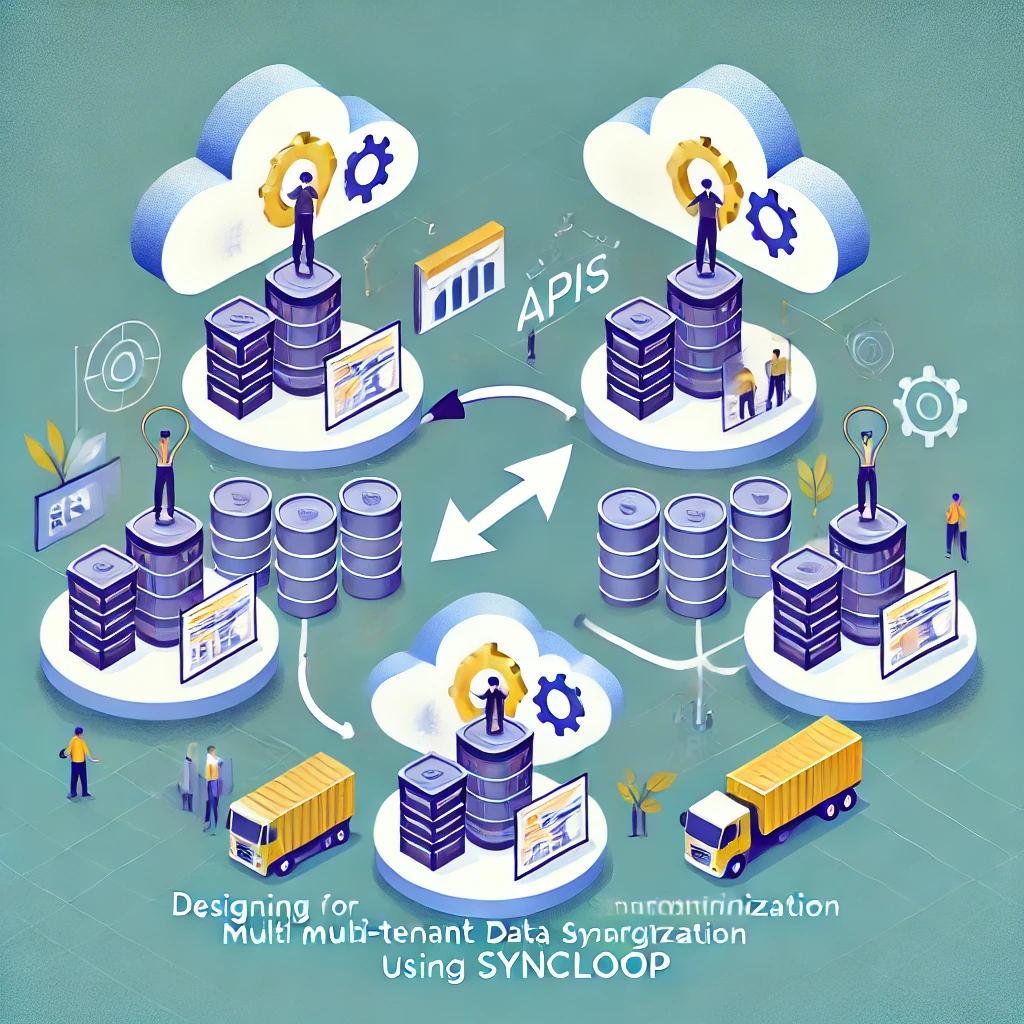Designing APIs for Multi-Tenant Data Synchronization Using Syncloop

Syncloop provides advanced tools to design robust and scalable APIs for multi-tenant data synchronization, simplifying development and management. This blog explores how Syncloop supports data synchronization in multi-tenant environments and shares best practices for implementation.
The Role of Data Synchronization in Multi-Tenant Systems
Data synchronization ensures that tenant-specific information remains consistent across applications and systems. Key benefits include:
- Real-Time Updates: Delivering accurate and timely data for improved decision-making.
- Cross-System Consistency: Ensuring synchronized data across CRMs, ERPs, and other integrated tools.
- Enhanced User Experience: Providing tenants with seamless access to the latest information.
- Operational Efficiency: Automating data flow to minimize manual intervention and errors.
Challenges in Multi-Tenant Data Synchronization
- Data Isolation Ensuring that data from one tenant is inaccessible to others.
- Scalability Handling the growing number of tenants and data volumes without performance degradation.
- Latency Reducing delays in data synchronization for real-time applications.
- Conflict Resolution Managing inconsistencies and resolving data conflicts efficiently.
- Monitoring and Troubleshooting Identifying and resolving issues in complex synchronization workflows.
How Syncloop Supports Multi-Tenant Data Synchronization
Syncloop provides features and tools designed to address these challenges effectively:
- Dynamic Data Mapping Normalize and transform data for consistent synchronization across tenants and systems.
- Workflow Automation Automate synchronization processes, reducing manual tasks and errors.
- Scalable Architecture Handle increasing data volumes and tenant numbers with ease.
- Real-Time Processing Enable low-latency synchronization for real-time data consistency.
- Role-Based Access Control (RBAC) Enforce strict data isolation and secure access policies for tenants.
- Monitoring and Alerts Track synchronization performance and receive notifications for anomalies.
- Conflict Resolution Tools Automatically detect and resolve data inconsistencies during synchronization.
Steps to Build Data Synchronization APIs with Syncloop
Step 1: Define Synchronization Requirements
Identify the scope and requirements of your synchronization API, such as:
- Supported data types (e.g., transactional, user-specific, or metadata).
- Frequency of synchronization (real-time, scheduled, or batch).
- Integration with external systems or applications.
Step 2: Design API Endpoints
Define API endpoints for synchronization workflows. Examples include:
- /sync/data: Synchronize tenant data between systems.
- /sync/status: Retrieve the status of ongoing synchronization processes.
- /sync/conflicts: List and resolve data conflicts.
Step 3: Automate Workflows
Leverage Syncloop’s workflow automation tools to:
- Trigger synchronization events based on specific actions or schedules.
- Validate and normalize incoming data for consistent formatting.
- Implement retry mechanisms for failed synchronization tasks.
Step 4: Ensure Data Isolation
Use Syncloop’s RBAC and tenant-specific configurations to:
- Segregate data by tenant to maintain privacy.
- Assign access controls based on tenant roles and permissions.
Step 5: Monitor and Optimize
Enable Syncloop’s real-time monitoring tools to:
- Track API performance and latency metrics.
- Detect synchronization errors and conflicts.
- Optimize workflows based on usage patterns and tenant feedback.
Step 6: Test and Validate
Simulate real-world scenarios using Syncloop’s testing environment. Validate:
- Synchronization speed and accuracy.
- API behavior under high-traffic conditions.
- Conflict resolution and retry mechanisms.
Best Practices for Multi-Tenant Data Synchronization
- Design for Scalability Use a distributed architecture to handle increasing data volumes and tenant numbers.
- Enforce Strict Isolation Implement robust access controls to protect tenant data and ensure compliance.
- Leverage Real-Time Processing Enable real-time synchronization for applications requiring immediate updates.
- Monitor Continuously Track synchronization performance and resolve issues proactively with Syncloop’s monitoring tools.
- Document Synchronization Workflows Provide clear documentation for API usage, conflict resolution, and error handling.
Example Use Case: SaaS CRM Platform
A SaaS CRM platform uses Syncloop for multi-tenant data synchronization:
- Real-Time Updates: Synchronize customer data across sales and marketing platforms instantly.
- Data Isolation: Ensure each tenant’s data remains private and accessible only to authorized users.
- Conflict Resolution: Automatically resolve data conflicts using predefined rules.
- Monitoring: Track synchronization workflows and optimize performance during peak usage.
- Scalability: Handle increasing tenant numbers and data volumes seamlessly.
Benefits of Using Syncloop for Multi-Tenant Data Synchronization
- Enhanced Efficiency: Automate data flow to reduce manual effort and errors.
- Improved Scalability: Support growing tenant bases with a scalable infrastructure.
- Robust Security: Protect tenant data with role-based access control and encryption.
- Real-Time Consistency: Synchronize data instantly for up-to-date information across systems.
- Actionable Insights: Use monitoring tools to identify and resolve issues proactively.
The Future of Multi-Tenant Synchronization
As SaaS platforms continue to expand, efficient and secure data synchronization will remain a cornerstone of their success. Syncloop provides developers with the tools needed to design, monitor, and optimize synchronization APIs, enabling seamless data management in multi-tenant environments.
Image Description
A conceptual illustration showcasing Syncloop’s capabilities for multi-tenant data synchronization, featuring dynamic workflows, real-time updates, and robust data isolation. The image highlights seamless integration and scalability for SaaS platforms.
Back to Blogs